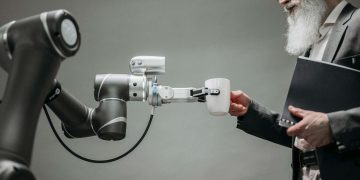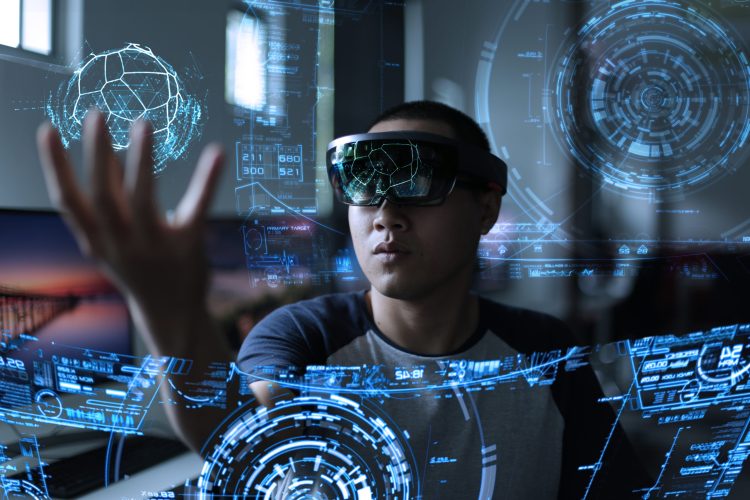Introduction
Augmented Reality (AR) has evolved from a futuristic concept mostly associated with gaming and entertainment to a transformative technology with real-world applications across numerous industries. While Pokémon Go and other gaming experiences brought AR into the mainstream, the technology’s true potential lies far beyond digital creatures in the real world. In fact, AR is now making a significant impact in sectors like education, healthcare, and retail, offering new ways for businesses and consumers to interact with information and products. This article explores the evolution of AR, how it is being applied in these industries, and the challenges and opportunities surrounding its commercial future.
1. What is Augmented Reality?
Before diving into its various applications, it’s essential to understand what AR is and how it differs from virtual reality (VR).
1.1 Defining AR
Augmented Reality refers to the technology that overlays digital content (such as images, sounds, or data) onto the real world. Unlike virtual reality, which immerses users in a completely virtual environment, AR enhances the physical world by integrating virtual elements into it. Users typically interact with AR through devices like smartphones, AR glasses, or smart contact lenses.
1.2 How AR Works
AR relies on several key technologies:
- Cameras and Sensors: To capture the real world and understand the environment.
- Processing Power: To interpret the data and overlay virtual objects in real time.
- Displays: Whether through a smartphone screen or AR glasses, displays are used to show the combination of virtual and physical worlds.
By merging real-time environments with virtual elements, AR provides a more immersive and interactive experience compared to traditional screen-based interactions.
2. The Rise of AR Beyond Gaming
While AR began its journey primarily through entertainment and gaming, its practical applications in everyday life are becoming increasingly evident. Let’s explore some of the key industries where AR is making a significant impact.
2.1 AR in Education
In education, AR has the potential to transform traditional learning environments, offering interactive and immersive experiences that engage students in ways traditional textbooks or lectures cannot.
- Interactive Learning: AR can bring textbooks and static learning materials to life, allowing students to interact with 3D models of historical artifacts, complex scientific concepts, or even anatomical models. This hands-on learning approach enhances comprehension and retention.
- Virtual Classrooms: AR technology can also create immersive learning environments where students are able to interact with the subject matter in a real-world context. For instance, medical students can practice surgeries virtually with AR simulations, while architecture students can “walk through” virtual buildings they’ve designed.
- Personalized Education: AR can offer customized learning experiences tailored to the pace and interests of individual students, potentially addressing different learning styles (visual, auditory, kinesthetic).
Example: Google Expeditions allows students to take virtual field trips to places like the pyramids of Egypt or the surface of Mars, using only smartphones and AR technology.
2.2 AR in Healthcare
Healthcare is another field where AR is proving to be a game-changer, both in training and in patient care.
- Surgical Assistance: AR can be used to overlay vital information onto a surgeon’s field of vision during procedures. For instance, AR can display 3D models of organs or tumors in real-time, aiding surgeons in making precise decisions. Microsoft HoloLens, used by medical professionals, can enhance the surgery experience by visualizing the patient’s anatomy and giving detailed insights for better accuracy.
- Medical Training: AR allows medical students to practice surgeries or diagnosis procedures in a virtual environment before working with real patients, minimizing risks and improving outcomes. It can also be used to create detailed 3D representations of the human body that medical professionals can interact with for learning purposes.
- Patient Education and Therapy: AR can be used to explain medical conditions and treatments to patients, offering a clearer understanding of complex diagnoses or treatment plans through interactive visuals. For rehabilitation, AR can provide guided exercises that monitor progress and encourage proper form.
Example: AccuVein, an AR-based system, helps medical professionals locate veins for injections by visualizing them on the skin’s surface in real-time, significantly improving accuracy in difficult cases.
2.3 AR in Retail and E-Commerce
Retail is one of the most exciting areas where AR is enhancing customer experience and transforming the shopping journey.
- Virtual Try-Ons: One of the most popular applications of AR in retail is virtual try-on experiences. Customers can use AR-powered apps to visualize how products like clothes, makeup, or accessories will look on them before making a purchase. This not only improves convenience but also reduces return rates.
- Product Visualization: AR enables customers to visualize how a piece of furniture, a new appliance, or even a new coat of paint would look in their own home before buying. Retailers like IKEA have implemented AR-based apps that allow customers to place virtual furniture in their space to see how it fits.
- In-Store Experience: Retailers can also use AR to enhance the in-store shopping experience by offering virtual product information, promotions, and even gamified experiences. This adds a layer of interactivity that can engage customers and increase brand loyalty.
Example: L’Oreal has created AR tools like the “Virtual Makeup Try-On” for customers to try out makeup products through their smartphone cameras before purchasing.

3. Commercialization of AR: Opportunities and Challenges
While AR technology has enormous potential across multiple sectors, the road to widespread adoption faces both significant opportunities and challenges.
3.1 Opportunities for Business Growth
- New Revenue Streams: By integrating AR into existing business models, companies can create entirely new revenue streams. For instance, AR-powered advertising offers an immersive and engaging way for brands to interact with consumers, creating more personalized and impactful campaigns.
- Enhanced Customer Experience: In industries like retail, healthcare, and education, AR offers businesses the ability to deliver a richer, more personalized experience to customers. This can increase customer satisfaction, improve engagement, and drive sales.
- Data Collection: AR-enabled devices can collect valuable data on how customers interact with products and services. This data can be used to personalize future interactions, optimize store layouts, and improve marketing strategies.
3.2 Challenges in AR Adoption
- Hardware Limitations: While smartphones and tablets can support AR apps, more advanced AR applications (such as those requiring AR glasses) still face hardware limitations in terms of processing power, battery life, and user comfort. Companies like Microsoft, Apple, and Magic Leap are developing AR glasses, but these devices are still expensive and have not yet achieved widespread adoption.
- Cost and Accessibility: The development and implementation of AR technologies can be expensive, making it difficult for smaller businesses or organizations to adopt them. While many large companies are leading the way, smaller players might struggle to implement AR solutions effectively due to the high cost of development and equipment.
- User Adoption: Despite its potential, the mass adoption of AR is still in its early stages. While younger, tech-savvy consumers are more likely to engage with AR, older or less tech-savvy individuals may resist using AR due to unfamiliarity or discomfort with new technology.
- Privacy and Security Concerns: AR applications often rely on real-time data collection from users, including their location and environment. This raises concerns over privacy and security, especially when sensitive personal data is involved.
4. The Future of AR: Trends and Innovations
Looking ahead, AR is expected to continue its rapid evolution, with several emerging trends shaping its future.
4.1 AR and 5G
The roll-out of 5G networks will significantly improve the capabilities of AR. Faster internet speeds and lower latency will allow for more seamless and responsive AR experiences, particularly in industries like gaming, real-time collaboration, and live events. This will make AR more accessible and practical for consumers and businesses alike.
4.2 AR and AI Integration
The combination of AR and Artificial Intelligence (AI) will allow for more intuitive and adaptive experiences. AI can help AR systems understand their environment and make real-time decisions, such as adapting virtual objects to dynamic physical environments. This will make AR more immersive and personalized.
4.3 The Emergence of AR Glasses
As AR glasses become more affordable and advanced, they could replace smartphones as the primary AR device. Companies like Apple, Google, and Microsoft are heavily invested in the development of AR glasses, which could open up a new frontier for AR applications in both professional and personal settings.
Conclusion
Augmented Reality has evolved far beyond its initial use in gaming and entertainment. Today, AR is transforming a range of industries, from education and healthcare to retail and beyond. As businesses continue to explore new ways to integrate AR into their operations, the technology’s commercial potential is vast. However, challenges around hardware, costs, and user adoption still remain. As these hurdles are addressed, AR will likely become an indispensable part of daily life, offering innovative solutions and enhancing the way we learn, shop, work, and engage with the world around us.













































Discussion about this post